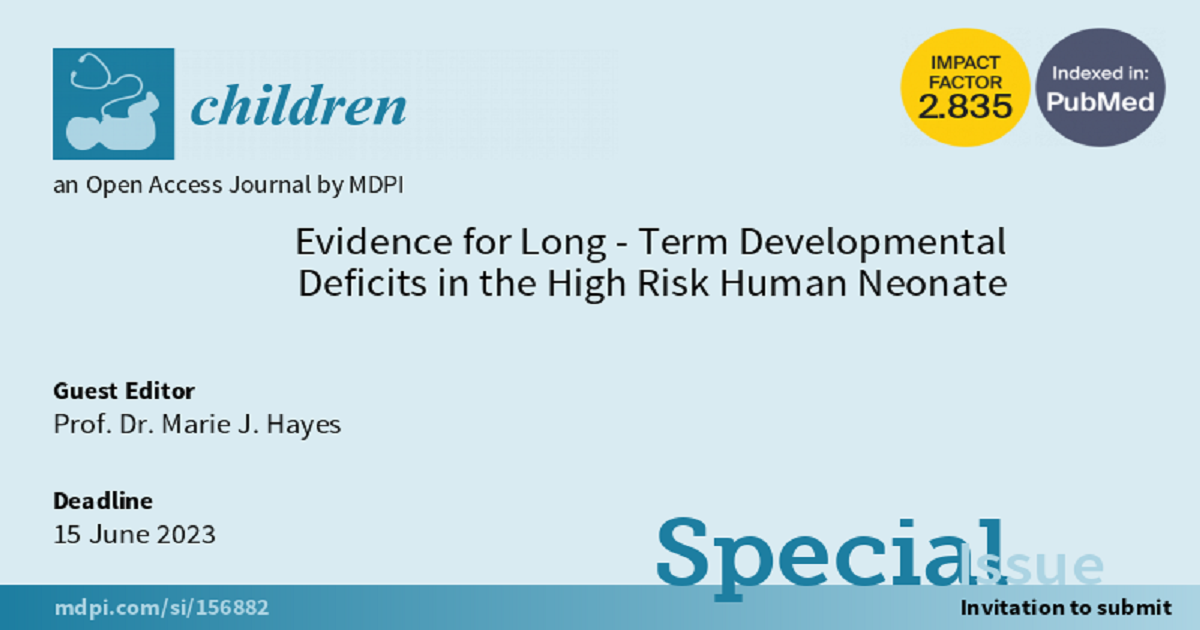Evidence for Long-Term Developmental Deficits in the High Risk Human Neonate
A special issue of Children (ISSN 2227-9067). This special issue belongs to the section "Pediatric Neonatology".
Deadline for manuscript submissions: closed (15 June 2023) | Viewed by 4383

Special Issue Editor
Special Issue Information
Dear Colleagues,
The United States’ opioid addiction epidemic has dramatically affected women of childbearing age and their offspring. The standard of care for pregnant women with opioid dependence is daily methadone replacement therapy, a long acting μ-opioid receptor agonist that crosses the placental barrier. In animal models, prenatal and postnatal opioid exposure is associated with long-term reproductive and behavioral effects. In human studies, fetal exposure in the third trimester causes a striking increase in neonatal abstinence syndrome (NAS), requiring hospitalization and pharmacological replacement therapy using methadone or morphine for weeks to months postnatally to resolve symptoms. NAS treatment strategies have improved in the last decade; however, little is known about longer-term developmental deficits due to prenatal and/or postnatal opioid exposure. One significant concern is the difficulty of separating opioid exposure from the teratogenic consequences of comorbid substances of abuse (e.g., tobacco, alcohol, marijuana) commonly present in addiction. Second, maternal psychological competence has been shown to be impaired with opioid dependence, lending to concern regarding infant attachment and social development. Finally, most opioid-exposed children are raised with economic adversity and social deprivation, which are known to negatively impact child development.
This Special Issue is soliciting contributions that shed light on this important interdisciplinary topic and welcomes submissions that reflect longitudinal and well-controlled studies on prenatal opioid exposure and enduring consequences for child development.
Prof. Dr. Marie J. Hayes
Guest Editor
Manuscript Submission Information
Manuscripts should be submitted online at www.mdpi.com by registering and logging in to this website. Once you are registered, click here to go to the submission form. Manuscripts can be submitted until the deadline. All submissions that pass pre-check are peer-reviewed. Accepted papers will be published continuously in the journal (as soon as accepted) and will be listed together on the special issue website. Research articles, review articles as well as short communications are invited. For planned papers, a title and short abstract (about 100 words) can be sent to the Editorial Office for announcement on this website.
Submitted manuscripts should not have been published previously, nor be under consideration for publication elsewhere (except conference proceedings papers). All manuscripts are thoroughly refereed through a single-blind peer-review process. A guide for authors and other relevant information for submission of manuscripts is available on the Instructions for Authors page. Children is an international peer-reviewed open access monthly journal published by MDPI.
Please visit the Instructions for Authors page before submitting a manuscript. The Article Processing Charge (APC) for publication in this open access journal is 2400 CHF (Swiss Francs). Submitted papers should be well formatted and use good English. Authors may use MDPI's English editing service prior to publication or during author revisions.
Keywords
- prenatal opioid exposure
- teratogens
- developmental outcomes
- environmental risk
- behavior adaptation
- executive function
- alcohol and tobacco






